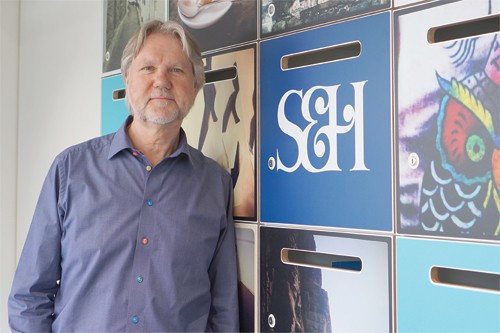
PMLiVE: What are the hallmarks of good creative work in healthcare communications?
DH: We shouldn’t really be separating out ‘healthcare communications’ as being different from ‘communications’. Yes, the environment is highly regulated, the products in the main cannot be advertised to the ultimate consumers, and the target audiences are somewhat different and more discerning, but good creative communication is good creative communication. The rules, if you like, apply to all communication:
- It has to stop you, interrupt your thought processes, and have ‘impact’, to use that dreadful over-used parameter
- It has to be persuasive. It has to be informative, but surely sell to you
- It has to tell you something different about the brand, or at least convince you it’s different
- It has to connect with you on an emotional level, as well as the rational level. And, ideally, make you do something: buy the product, consider buying it, or in this context, make you want to prescribe the product.
When was the last time you were really impressed by healthcare creative work?
DH: I have to admit I am struggling here! We have some incredibly talented people in the industry trying to do great work, but sadly there is less, rather than more, of what you would argue is great creative. For most creative people in the industry, it’s not for the want of trying!
Is pharma marketing less creative than its consumer sector?
DH: That old chestnut eh! Sadly I think the simple answer is ‘yes’. But we do give ourselves a hard time about this in the healthcare advertising business. The reality is that there are some awful consumer ads out there as well, and if you watch enough TV, especially some of the satellite channels, there is another world out there! Not every consumer ad is for Cadbury, John Lewis, McDonald’s, Foster’s etc. There are some truly dreadful consumer ads where you do wonder how the agency could be happy with the end-product!
It also fascinates me that when healthcare brands end up on TV or in the mainstream media, they are so ‘pharmaceutical’, with a communication that ends up as a pack shot and some medical claims! And yet many of these ads are produced by consumer agencies. Maybe it’s the lack of ambition with the clients, or lack of budget. Or does the latter lead to the former…
In the case of the pharma industry, we have to accept it is highly regulated, the products can be complex and there is increasing conservatism because of the political environment. There is also a huge shift to ‘globalised’ creative now which often results in compromises to suit all the global stakeholders.
How valuable is a good creative concept/execution to a pharmaceutical company?
DH: If you broaden this out to all creative, then there is overwhelming evidence that the most creative pieces of communication, as recognised through creative awards, are more likely to be successful – as shown by the IPA/Gunn Report’s joint study The Link Between Creativity and Effectiveness in 2011 – and I cannot believe the principles are any different in pharma.
Sadly the focus of most pharma marketing teams, in my humble opinion, is the salesforce and how it is delivering the sales message. Anything else seems to be irrelevant. This is probably because the vast majority of marketers have come from the salesforce, and this is still the most effective part of the communication in their eyes. However, in many markets now access for sales reps is increasingly difficult, so you would think that marketers would be looking to be more creative in the other communication channels they use.
Does there need to be a stronger case built for creativity in communications?
DH: The simple answer is yes! How we do it is another matter. We have to somehow demonstrate to clients that more creative communication works. This is difficult, given the restrictions pharma faces, but the rules of effective communication should still apply.
I was fortunate enough to attend the second Lions Health Awards in Cannes last month, and it was certainly interesting to see the quality of the creative work on show. There was outstanding work in both the ‘Health and wellness’ section as well as ‘Pharma’ which was really encouraging. Clearly one of the aims of the awards is to raise the profile of the industry, and hopefully the standard of creative work, by recognising and rewarding great work. You could argue – going back to my original point – that we should not be differentiating healthcare, and instead treating it like any other market sector such as automotive, retail, fashion and so on. Award shows and other recognised industry events will only help to drive the importance and benefits of good creativity in everything we do!
David Higgins is UK managing director at Sudler & Hennessey Group. He can be contacted via email: David.Higgins@sudler.com
In the PME/PMLiVE series Pharma Perspectives with the HCC senior industry and agency figures give their thoughts on today’s key marketing challenges. If you have a topic you’d like the series to explore please send it to editor@pmlive.com
The Health Communications’ Council (HCC) is a specialist division of the European Association of Communications Agencies (EACA). For more information visit: http://bit.ly/1oeJY1D




